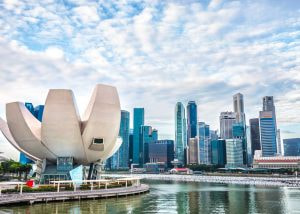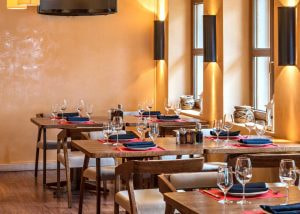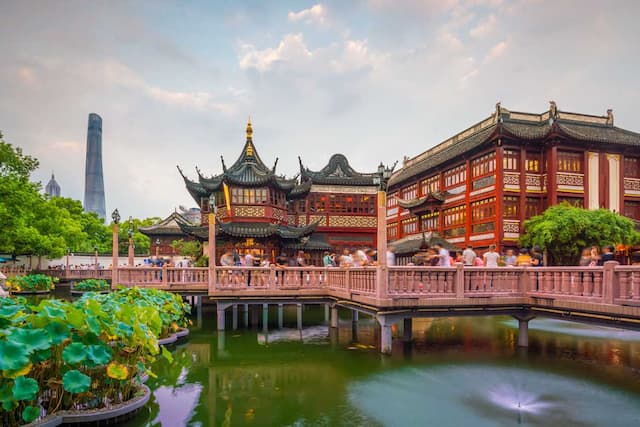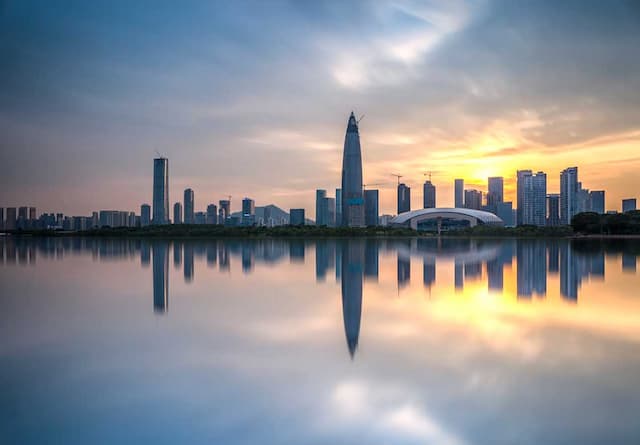Forbidden City Beijing
The Forbidden City is located in the middle of Beijing. Constructed in 1420, during the early Ming Dynasty, it is China's best-preserved imperial palace, and the largest ancient palace structure in the world.
As one of the five most important palaces in the world, the grand halls and walls proudly display the essence and culmination of traditional Chinese architecture, fitting for the capital city of the world’s largest nation. It is the 6th Largest imperial palace in the world. It’s located in the center of Beijing, north of Tiananmen Square.
The Forbidden City covers an area of about 72 hectares (180 acres) with a total floor space of approximately 150,000 square meters (1,600,000 square feet). It consists of more than 90 palaces and courtyards, 980 buildings and over 8,728 rooms. (A common myth states that there are 9,999.5 rooms, but it is not supported by survey evidence.)
The Forbidden City took 14 years to build (from 1406 to 1420). It was built by over 1,000,000 workers, including more than 100,000 craftsmen. It was the imperial palace of China for 492 years (1420–1912). It was the home of 24 emperors — 14 of the Ming dynasty and 10 of the Qing dynasty. In 1925, the Forbidden City became the Palace Museum. It was named a UNESCO World Heritage Site in 1987.
Ancient Chinese Astronomers believed that the Purple Star (Polaris) was in the centre of heaven and therefore the Heavenly Emperor lived in the Purple Palace. The Palace for the emperor on earth was called the Purple City. It was forbidden to enter the palace without special permission of the emperor. Hence its name 'The Purple Forbidden City', usually called 'The Forbidden City'. The palace is 960 meters from north to south and 750 meters from east to west, The Forbidden City is surrounded by a six meter deep, 52 meter wide moat.
Most of the visitors enter the Forbidden City through Tian'anmen, ‘Gate of Heavenly Peace’. It hosts 14 million visitors per year, a maximum of 80,000 visitors per day.
Top tour packages
Modern China With Beijing And Shanghai
Beijing (3N) Shanghai (3N),
Flight Not Included
₹71,370
per person
- Valid upto 30 Sep 2026
Simple Beijing Xian with Shanghai
Beijing (3N) Xi'an (2N), +1 more
Flight Not Included
₹84,550
per person
- Valid upto 30 Sep 2026
Ancient China with Beijing Xian Guilin & Shanghai
Beijing (3N) Xi'an (2N), +2 more
Flight Not Included
₹85,000
per person
- Valid upto 30 Sep 2026
Best Of Hong Kong With Shenzhen
Hong Kong (3N) Shenzhen (2N), +1 more
Flight Not Included
₹1,60,190
per person
- Valid upto 30 Sep 2026
Discover Hong Kong, Shenzhen And Macau
Hong Kong (3N) Shenzhen (2N), +1 more
Main Flight Included
₹1,90,820
per person
- Apr, Jun, May
Experience Hongkong, Shenzhen & Macau
Hong Kong (3N) Shenzhen (2N), +2 more
Main Flight Included
₹2,11,910
per person
- May
Happy Travellers
Beautiful Memories with Flamingo Transworld
Dr. Kruti Patel
 Aug
AugA Dream Trip to France and Switzerland with Flamingo
Mr. Dharmesh Shah
 Aug
AugIncredible Europe Tour with Flamingo Transworld
Ms. Jyoti & Mr. Tushar
 Jul
JulWonderful Japan Trip Experience with Flamingo
Surabhi Udeshi
 May
MayUnforgettable Experience With Flamingo Transworld
Mr. Ambrish Shah
 Mar
MarAn Unforgettable Journey with Unnati and Flamingo !
Mr. Navneet Bisani
 Dec
DecWe are Thankful to Flamingo Tours And Travels
Mr. Vijay Shah
 Oct
OctExcellent Experience Southeast Trip With Flamingo Travels
Mr. Manoj Betai
 Jun
JunWonderful Trip with Flamingo Travels
Ms. Chetna Ajmera
 Jul
JulSuper Experience with Flamingo Travels
Shailesh Shah
 Jun
JunTrending travel articles

Affordable Bali Trip Under ₹30000 – Flamingo Transworld Budget Itinerary for First-Time Travelers
Summary: Looking for a budget-friendly Bali trip in 2026? This blog shows how you can enjoy a relaxing 5-day Bali Trip under ?30000/- by choosing smart stays, simple food and the right places. Perfect for first-time Indian travellers looking for a budget-friendly Bali holiday. We all have seen tons of pics of temples, Bali Swing, […]

Japan Tour Packages from India Under ₹3 Lakh – Explore Japan on a Budget
Summary: Your dream of exploring Japan is possible, even with a strict budget! This blog shares how Japan tour packages from India under ?3 lakh are possible. It covers real costs, budget tips, the best time to visit, and much more. It helps you understand how to save money and still enjoy a great Japan […]

Singapore Tour Packages from India Under ₹1 Lakh – Budget-Friendly Trips 2025-26
Summary: A trip to Singapore can fit your budget with the right plan. This blog explains how Singapore tour packages from India under ?1 lakh work, what costs to expect, and how to save money. It helps you understand the best places to visit in Singapore in 2026 so you can enjoy this island country […]

Top Indian Restaurants in Hanoi to Try in 2026!
Summary: Indian restaurants in Hanoi are more than just places to eat. They serve Indian food with a Vietnamese welcome. Whether you are a vegetarian, prefer halal food, or just miss home-style dal, these restaurants have it all. Every meal is served with care and a friendly smile, making you feel right at home in […]

Macau – A city that refuses to sleep , and wont let you either !
Summary: Macau Travel – Macau is a city that never slows down—filled with luxury hotels, thrilling attractions, endless nightlife, and unforgettable energy. From staying at The Venetian to breathtaking Macau Tower views and vibrant casinos, Muskan Golecha’s experience captures the true spirit of a city that you don’t just visit, you live! Macau is one […]

10 Days Itinerary for Switzerland – Perfect Trip Plan for First-Time Visitors!
Summary: If you want a calm, scenic, and well-paced trip, this 10 days itinerary for Switzerland is made for you. It suits families, honeymooners, seniors, and solo travellers. This plan combines top attractions with relaxed, easy travel days. It also keeps Indian comfort in mind. Read on to get the full day-by-day plan, smart tips, […]

Switzerland in Winter 2026: A Fairytale Experience of Snow, Alps & Christmas Markets!
Summary: Switzerland in winter 2026 is pure magic, snow-dusted Alps, glittering Christmas markets, and cozy wooden chalets bring fairytales to life. Whether you are sipping hot chocolate by the beautiful Swiss lakes or exploring the festive streets of cities, it feels like a movie. Perfect for Indian travellers, families, and honeymooners. This blog helps you […]

Christmas in Dubai 2025: Lights, Luxury & Festive Shopping!
Summary: Experience the magic of Christmas in Dubai 2025, where the city sparkles with lights, music, and festive cheer. From grand events to lively markets and fireworks, every corner feels joyful. Enjoy delicious food, family fun, and exciting shopping deals during the Dubai festive season. Plan your trip easily with Dubai Tour Packages and make […]

Bhutan In December 2025- Weather, Insider Tips, Best Time to Visit, and Things to Do!
Summary: Experience the magic of a trip to Bhutan in December 2025, with clear skies, vibrant festivals, fewer crowds, and stunning mountain views. This blog guides you through weather updates, travel tips, places to visit, and must-try experiences for your perfect Bhutan holiday. Plan your relaxing, crowd-free visit to Bhutan and experience the authentic charm […]

How to Plan A Budget Trip To Vietnam Under ₹60,000!
Summary: Trip To Vietnam Under ?60000 – Dreaming of travelling to Vietnam without stretching your wallet? This blog shares how to plan your trip to Vietnam under ?60,000. It shares everything, including flights, hotels, meals, and activities. Discover must-visit cities, real cost breakdown, and much more to make your Vietnam tour package memorable yet budget-friendly. […]






